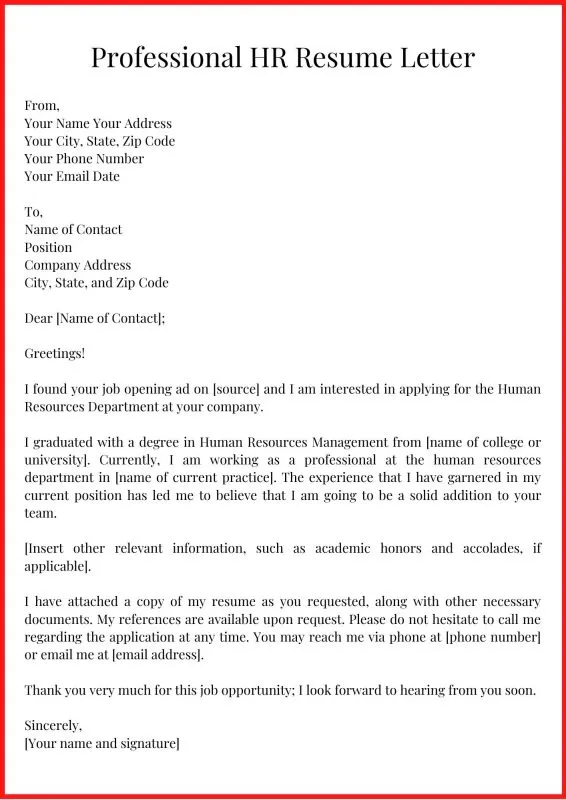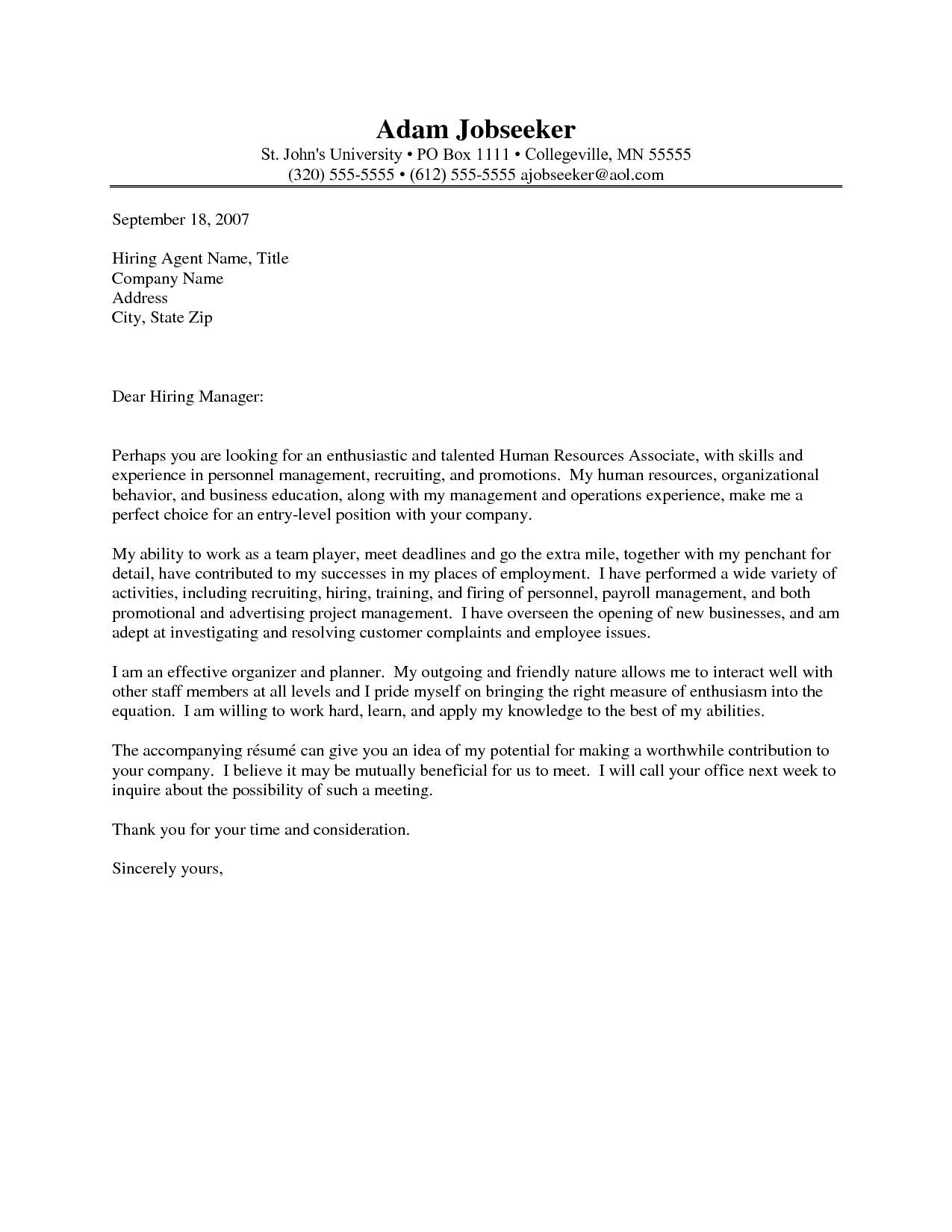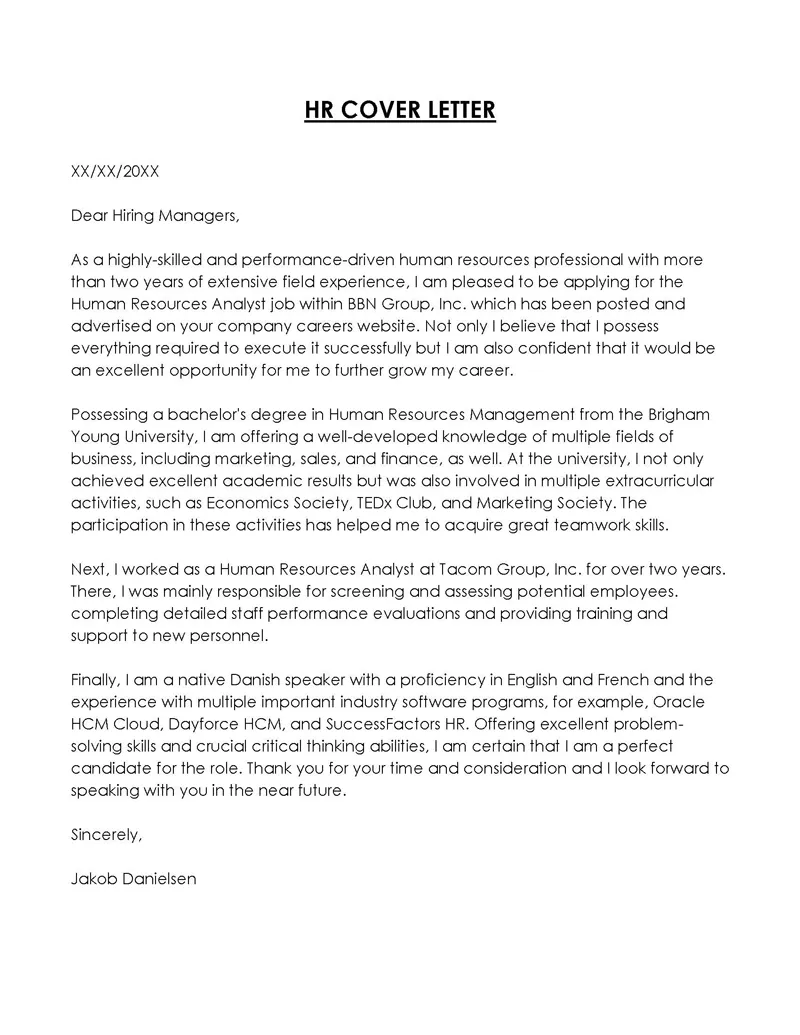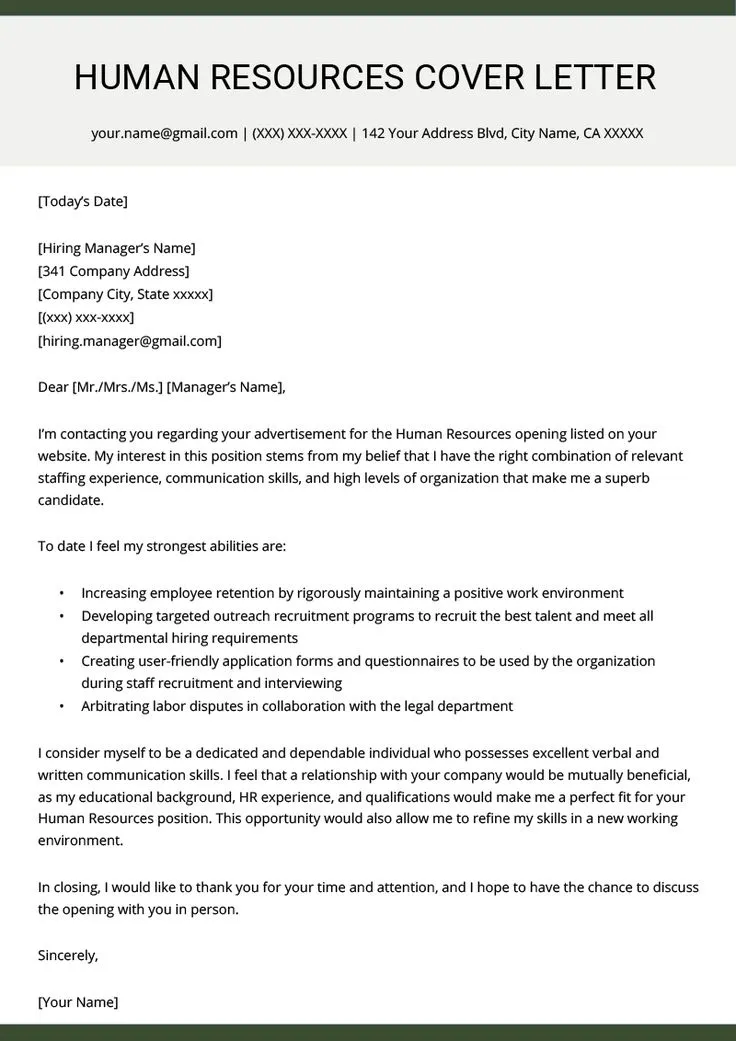HR Cover Letter Secrets
Breaking into the world of Human Resources requires more than just a stellar resume; it demands a cover letter that showcases your potential and captures the attention of hiring managers. The HR field is competitive, and your cover letter serves as your first impression, highlighting your skills, experience, and passion for the role. It’s your opportunity to tell your story and demonstrate why you are the perfect fit. To succeed in this field, understanding how to write a standout HR cover letter is key. The following tips will guide you through crafting a cover letter that not only gets noticed but also increases your chances of landing an interview. Remember, your cover letter is not merely a summary of your resume; it’s a powerful tool to highlight your personality, your dedication to HR, and how you can contribute to the organization’s success. Take these HR cover letter secrets to heart, and watch your application stand out.
Highlight Relevant Skills
In an HR role, your ability to articulate your skills is crucial. Start by carefully reviewing the job description and pinpointing the essential skills the employer seeks. Then, customize your cover letter to highlight how your skills match their requirements. For example, if the job requires experience in recruitment, spotlight your specific achievements in sourcing, screening, and interviewing candidates. If the role emphasizes employee relations, emphasize your experience in conflict resolution and fostering a positive work environment. Use action verbs to describe your skills and accomplishments. By addressing the employer’s needs and demonstrating your capacity to meet them, you will substantially improve your chances of making a strong first impression. Showcasing your skills directly aligned with the job description, such as using terms like ‘candidate sourcing,’ ‘performance management,’ and ’employee engagement,’ will demonstrate a clear alignment with the role and make a compelling case for your candidacy.
Showcase Achievements, Not Just Duties

Rather than just listing your responsibilities, focus on your achievements. Showcasing what you have accomplished can make your application memorable. Think about times when you exceeded expectations, solved problems, or improved processes. Did you reduce employee turnover? Implement a new HR system? Improve engagement scores? These achievements make a lasting impact. When you highlight achievements, it’s vital to provide context. Explain the actions you took, the results you achieved, and how your actions positively impacted the organization. This demonstrates that you’re not just completing tasks but are actively contributing to the company’s success. Instead of saying ‘Managed employee benefits,’ try something like, ‘Successfully streamlined the employee benefits enrollment process, resulting in a 15% increase in employee participation.’ This approach provides quantifiable proof of your impact.
Quantify Your Accomplishments
Quantifying your accomplishments is key to making your HR cover letter stand out. Using numbers and data adds credibility and illustrates the tangible outcomes you’ve achieved in previous roles. Whenever possible, incorporate specific metrics to show your successes. For example, instead of saying ‘Improved the recruitment process,’ say ‘Reduced time-to-hire by 20% through the implementation of a new applicant tracking system.’ Instead of stating ‘Increased employee satisfaction,’ write ‘Improved employee satisfaction scores by 10% through the implementation of a new employee engagement program.’ These quantifiable results provide concrete evidence of your skills, abilities, and the value you bring to a potential employer. Think about important KPIs in HR, such as cost per hire, employee retention rates, training completion rates, or the number of grievances resolved. Including these figures provides a clear understanding of your impact and the value you can provide to the company. Don’t hesitate to use percentages, dollar amounts, or specific figures to highlight your achievements.
Tailor to the Specific Job
One of the most common mistakes in HR cover letters is sending a generic document. Customization is critical; it shows that you care about the role. Carefully read the job description, highlighting the key skills, experience, and qualifications. Customize your cover letter to highlight how your skills and experience align. Mention the company by name and demonstrate your understanding of their mission, values, and culture. This shows that you’ve done your research and have a genuine interest in the position, significantly improving your chances of getting an interview. If you are applying for a role at a company known for its innovation, highlight your experience with new HR technologies. If the company is focused on employee well-being, emphasize your experience with wellness programs or employee engagement initiatives. This level of tailoring can set you apart.
Research the Company Culture

Before writing your cover letter, research the company’s culture. Visit their website, read the ‘About Us’ section, and check out their social media. Look for information about their mission, vision, and values. This research helps you tailor your cover letter, demonstrating that you are a good fit for the team. If the company values teamwork, highlight your experience in collaborative environments. If they emphasize innovation, mention your experience with creative HR practices. By showcasing your understanding of the company’s culture and how you can contribute, you significantly increase your chances of making a positive impression. Using keywords and phrases commonly used within the company shows that you understand and resonate with their values. This level of detail demonstrates your proactive approach and commitment to the specific opportunity, strengthening your cover letter’s impact.
Use Keywords Strategically
Many companies use Applicant Tracking Systems (ATS) to screen cover letters and resumes. These systems look for specific keywords and phrases to identify qualified candidates. To ensure your cover letter gets noticed, incorporate relevant keywords from the job description strategically. Carefully review the job posting and identify key skills, qualifications, and buzzwords. Then, integrate these keywords naturally into your cover letter. Avoid keyword stuffing, as this can make your cover letter sound unnatural and decrease your chances. Instead, use keywords in context. If the job description mentions terms such as ’employee relations,’ ‘recruitment,’ and ‘performance management,’ use these terms when describing your experience. Tailoring your keywords to each job ensures your application passes the initial screening process and reaches the hiring manager. Using the right keywords can make a big difference in getting your cover letter read and securing an interview.
Review and Proofread Carefully
Before submitting your HR cover letter, it’s vital to review and proofread it meticulously. Grammatical errors, spelling mistakes, and punctuation errors can create a negative impression and undermine your credibility. Use a spell-checker and grammar-checker, but do not rely on them completely. Proofread your cover letter yourself to catch any mistakes the software might miss. It’s also a good idea to have a friend, family member, or career counselor review your cover letter for you. A fresh perspective can often catch errors you might have missed. Pay close attention to the tone and style of your writing. Ensure your cover letter is professional, clear, and concise, and that it flows logically. A well-written and error-free cover letter demonstrates attention to detail and professionalism, essential qualities for an HR professional. Remember, your cover letter represents your communication skills. Taking the time to review and proofread is a crucial step in the job application process.
Ensure Professional Formatting

The formatting of your HR cover letter is just as important as its content. A well-formatted cover letter is easy to read and demonstrates professionalism. Use a standard font, such as Times New Roman, Arial, or Calibri, and a font size between 10 and 12 points. Ensure your cover letter is single-spaced with a blank line between paragraphs. Use clear headings and subheadings to organize your content, making it easy for the hiring manager to scan. Keep your cover letter concise, ideally no more than one page. Use proper margins and alignment. Avoid distracting elements, such as excessive use of bolding, underlining, or italics. Make sure your contact information is clearly displayed at the top. Proofread your cover letter to ensure the formatting is consistent and error-free. By paying attention to formatting, you can make a positive impression and demonstrate your attention to detail. A well-formatted cover letter not only ensures readability but also reflects your professionalism.
In summary, writing a compelling HR cover letter requires planning, attention to detail, and a strategic approach. By following the tips outlined here – highlighting relevant skills, showcasing achievements, quantifying your accomplishments, tailoring your letter to the specific job, and using keywords strategically – you can create a cover letter that grabs attention and increases your chances of landing your dream job in HR. Remember to research the company culture, carefully review and proofread your work, and ensure professional formatting. Best of luck with your job search!
